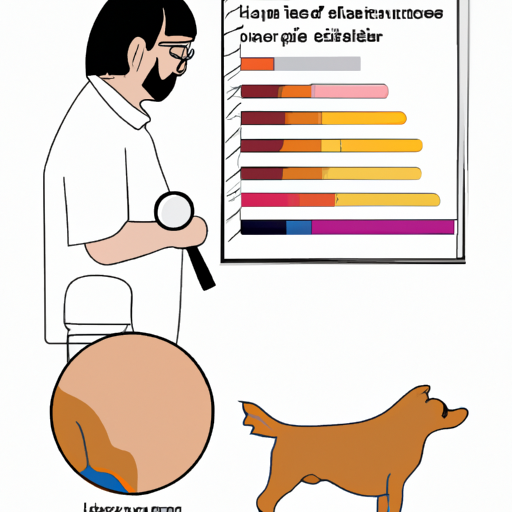As a pet owner, it’s completely normal to notice every little change in your dog’s appearance, behavior and overall health. One of the most common changes that pet owners notice is the color of their dog’s fur. Yes, your dog’s fur may change color over time. But why does this happen? Let’s explore this intriguing matter further.
Table of Contents
- Reasons for Color Change
- The Role of Genetics
- Health Issues and Color Change
- Age and Color Change
- Nutrition’s Effect on Fur Color
- Frequently Asked Questions
Key Takeaways
- Your dog’s fur color can change due to several factors including genetics, health issues, age, and diet.
- It is always important to consult a veterinarian if you notice drastic changes in your dog’s fur color, especially if it is accompanied by other symptoms.
- Maintaining a balanced diet and overall good health can help keep your dog’s fur color consistent.
Reasons for Color Change
There are various reasons why your dog’s fur might change color. Some are completely normal and harmless, while others may indicate an underlying health problem.
Genetics plays a key role in the color of your dog’s fur. Dogs can carry genes for different colors, and these genes can be expressed at different times throughout the dog’s life. This phenomenon is quite common in breeds like the Labrador Retriever, where puppies born with black fur often lighten to a chocolate or sandy color as they mature.
Another common reason for fur color change is exposure to sunlight. Just like human hair, dogs’ fur can lighten with prolonged exposure to the sun. The sun’s rays can break down the melanin in the fur, leading to a lightening effect. This article from PetMD provides a more detailed explanation of how sunlight affects your dog’s fur color.
Health issues can also cause changes in your dog’s fur color. Certain skin conditions can affect the hair follicles, leading to changes in fur color. Additionally, some medications can affect the color of your dog’s fur.
The Role of Genetics
As mentioned earlier, genetics is a major factor in determining your dog’s fur color. Dogs inherit their coat color from their parents, and these colors can sometimes change as the dog matures. This is especially common in breeds such as the Yorkshire Terrier, which is born with a black and tan coat that lightens to a blue and gold color as they grow older.
Health Issues and Color Change
Health issues can also lead to changes in your dog’s fur color. For instance, hypothyroidism, a condition where the dog’s body doesn’t produce enough thyroid hormone, can cause darkening of the skin and fur. Other skin conditions, such as dermatitis or fungal infections, can also cause changes in fur color. If you notice your dog’s fur changing color along with other symptoms like itching, flaking, or discomfort, it’s crucial to seek veterinary care immediately.
This article on PetMD provides more information about how health issues can affect your dog’s fur color and overall appearance.
Age and Color Change
Just like in humans, age can also cause fur color changes in dogs. Aging dogs often develop a condition called vitiligo, which leads to the loss of pigment in certain areas of the skin and fur, giving them a bleached or white appearance.
You can read about vitiligo in dogs on OneTopDog where they discuss various skin conditions in dogs.
Nutrition’s Effect on Fur Color
Your dog’s diet plays a significant role in their overall health and the health of their coat. Certain deficiencies or excesses in your dog’s diet can cause changes in fur color. For example, a deficiency in tyrosine, an amino acid that’s important for melanin production, can cause a black dog’s fur to turn reddish or brown.
Ensure your dog is getting a balanced diet, rich in essential nutrients. If you’re unsure, you can always consult a vet or a pet nutritionist.
Frequently Asked Questions
1. Can stress cause my dog’s fur to change color?
Yes, stress can cause fur color change in dogs. Stress can cause a condition called alopecia which can result in color change or hair loss.
2. Can I change my dog’s fur color back to its original color?
This depends on the cause of the color change. If the change is due to age or genetics, it’s unlikely that the color can be changed back. However, if it’s due to a health issue or dietary deficiency, addressing that issue may restore the original color.
3. Can I prevent my dog’s fur from changing color?
In some cases, you may be able to prevent color change by ensuring your dog has a balanced diet and is protected from excessive sunlight. However, changes due to age or genetics cannot be prevented.
In conclusion, there are many factors that can contribute to changes in your dog’s fur color. While some are perfectly natural and harmless, others may be indicative of underlying health issues. Therefore, it’s always important to monitor any changes and seek veterinary advice if you have any concerns.
To learn more about dog health and care, check out these articles on OneTopDog for grooming tips and OneTopDog for a comprehensive nutritional guide for dogs.



